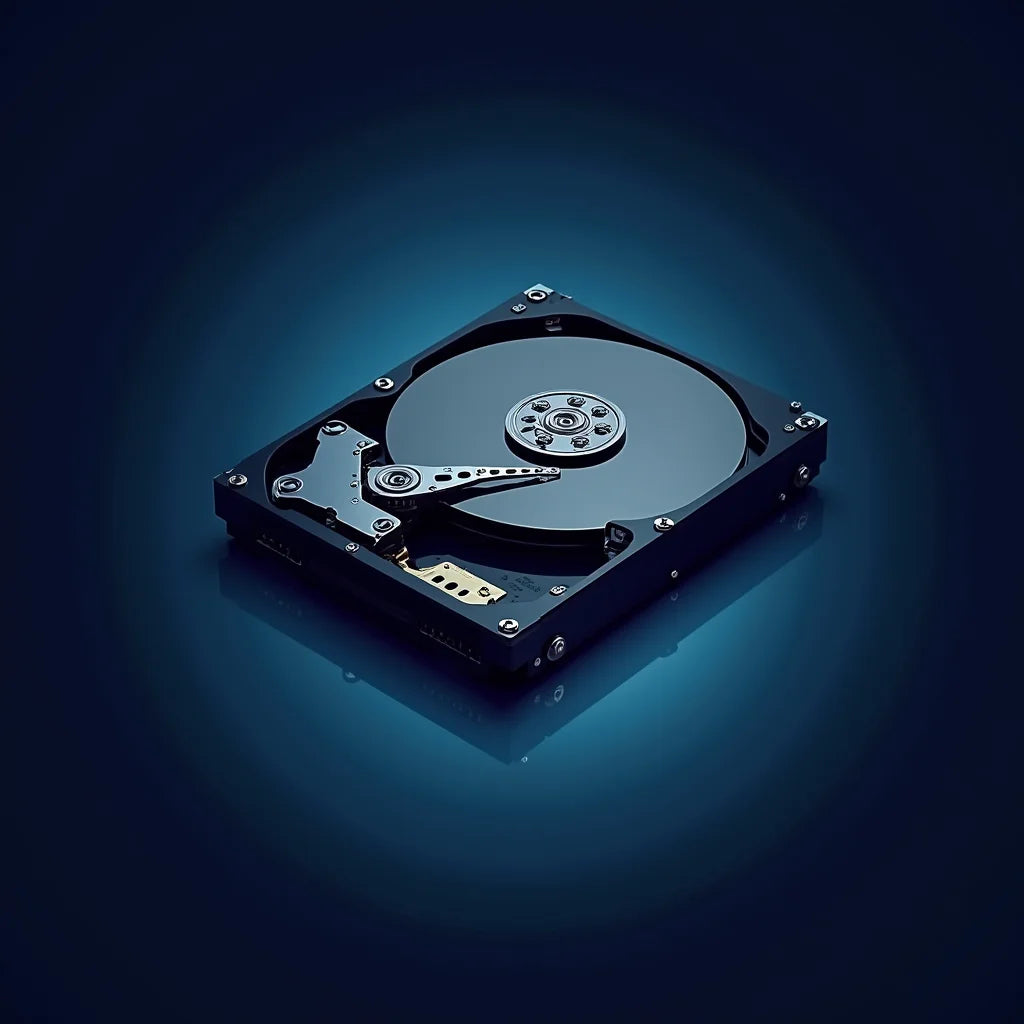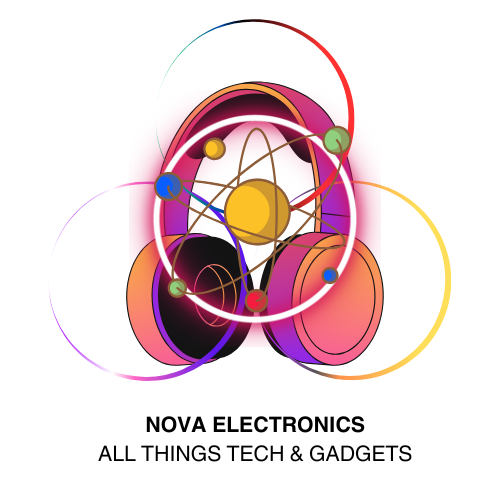
High Capacity Hard Drives That Power Your Data Growth
Nova Electronics Nova ElectronicsShare
Updated on: 2025-09-27
- Key benefits of high-capacity hard drives
- How to select and deploy high-capacity hard drives
- Step 1: Plan usable capacity and growth
- Step 2: Confirm form factor and interface
- Step 3: Choose NAS hard drives vs enterprise hard drives
- Step 4: Decide RAID or ZFS layout
- Step 5: Prefer CMR over SMR for multi-drive arrays
- Step 6: Check reliability and workload ratings
- Step 7: Validate enclosure, power, and cooling
- Step 8: Apply firmware and TLER settings
- Step 9: Burn-in test and baseline SMART
- Step 10: Monitor, maintain, and back up
- Answers to common questions about high-capacity hard drives
- Summary: Building a durable storage foundation
- About the author
High-capacity hard drives remain the most economical way to store large volumes of data at scale. Whether you are consolidating a creative studio’s media, building a multi-bay NAS, or adding deep archive to a server, high-capacity HDDs provide the right balance of density, durability, and predictable throughput. This article explains how to evaluate large-capacity hard drives, compare NAS hard drives and enterprise hard drives, and deploy them with confidence across use cases such as media workflows, virtualized environments, and long-term storage.
Key benefits of high-capacity hard drives
- Exceptional cost efficiency at scale: On a per-terabyte basis, large-capacity hard drives deliver a lower total cost than solid-state options for bulk data. This matters for video archives, backups, and surveillance where capacity is the primary driver.
- Proven endurance under continuous operation: High-capacity HDDs designed for NAS or datacenter duty include features such as rotational vibration sensors, stable write performance, and tuned error recovery, supporting 24/7 workloads.
- Predictable sequential throughput: For large file transfers—ingesting footage, serving media, or streaming backups—modern high-capacity HDDs achieve consistent sequential performance that scales with spindles.
- Flexible scalability: Adding additional bays or swapping to higher capacities lets you grow arrays without redesigning the entire stack, keeping infrastructure simple and cost-controlled.
- Alignment with mixed workloads: NAS hard drives balance reliability and acoustics for multi-user environments, while enterprise hard drives maximize workload rating and vibration tolerance in dense racks.
- Optimized for NAS and media workflows: For editors and archivists, high-capacity hard drives for video editing and storage pair well with caching SSDs, enabling fast project work and economical nearline storage on the same platform.
How to select and deploy high-capacity hard drives
Step 1: Plan usable capacity and growth
Estimate current data size, annual growth, protection overhead, and headroom. Add at least 20–30 percent free space to reduce fragmentation and maintain performance. For RAID, remember that parity or mirroring reduces usable capacity. Example: A 4-bay array with four 18 TB drives in RAID 5 yields roughly 54 TB raw minus filesystem overhead. Plan for expansion with spare bays or larger drives later.
Step 2: Confirm form factor and interface
Most high-capacity HDDs are 3.5-inch SATA for desktops and NAS, and 3.5-inch SAS for servers. Match interface to backplane and controller. SATA is common and cost-effective for NAS. SAS offers dual-porting, better error handling, and robust performance in enterprise chassis.
Step 3: Choose NAS hard drives vs enterprise hard drives
NAS hard drives are tuned for multi-bay systems (typically up to 8–24 bays depending on model) with controlled error recovery and vibration sensors. They are ideal for small business and prosumer arrays. Enterprise hard drives increase workload ratings (measured in TB/year), sustained performance, and vibration tolerance for dense racks and continuous high duty cycles. Select the class that matches your bay count, workload intensity, and uptime requirements.
Step 4: Decide RAID or ZFS layout
Pick a layout that balances resilience, rebuild time, and usable capacity:
- RAID 1/10: Fast rebuilds and excellent performance; capacity efficiency is lower.
- RAID 5/6: Strong capacity efficiency; use RAID 6 when drives are 14 TB or larger to mitigate rebuild risk.
- ZFS RAIDZ1/RAIDZ2: End-to-end checksums and self-healing; match vdev width to performance and resiliency goals.
Factor rebuild windows: as capacities increase, rebuilds take longer. Extra parity can protect against concurrent failures.
Step 5: Prefer CMR over SMR for multi-drive arrays
Conventional Magnetic Recording (CMR) maintains stable write behavior under mixed workloads. Shingled Magnetic Recording (SMR) increases density but can experience long write amplification during sustained or random writes and may be unsuitable for RAID rebuilds. For NAS and enterprise arrays, prioritize CMR models for predictable performance.
Step 6: Check reliability and workload ratings
Review workload rating (TB/year), Mean Time Between Failures (MTBF), and the warranty. Enterprise hard drives often carry higher workload ratings and longer warranties. Verify features such as rotational vibration sensors (RV), Time-Limited Error Recovery (TLER), and helium sealing, which can reduce power and heat in high-capacity designs.
Step 7: Validate enclosure, power, and cooling
High-capacity HDDs draw more current at spin-up. Ensure your enclosure and power supply can handle simultaneous spin-up or enable staggered spin-up in firmware. Provide direct airflow across drive bays to maintain healthy temperatures. Keep vibration in check with proper mounting and drive trays designed for multi-bay systems.
Step 8: Apply firmware and TLER settings
Use vendor tools or your NAS OS to confirm TLER (or equivalent) is enabled so that the controller—not the drive—manages extended error recovery. Update firmware to the latest stable revision supported by your chassis or NAS vendor.
Step 9: Burn-in test and baseline SMART
Before putting drives into production, run surface scans and extended SMART tests. Record baseline SMART values (reallocated sectors, pending sectors, temperature, and error rates). Early testing helps identify infant mortality and yields a reference for future comparisons.
Step 10: Monitor, maintain, and back up
Enable SMART monitoring and alerts in your NAS or server. Schedule periodic scrubs or consistency checks for RAID or ZFS. Follow the 3-2-1 backup rule: three copies of data, on two different media, with one offsite. Separate backup targets protect against accidental deletion, ransomware, or array-level failures.
Explore current high-capacity options and accessories here: Hard Drives, Storage, Blog, and Support.
Answers to common questions about high-capacity hard drives
What are the best high-capacity hard drives for long-term storage?
The best choice depends on the environment. For a multi-bay NAS, choose NAS hard drives that use CMR recording, include vibration sensors, and support TLER to ensure consistent behavior during rebuilds. For servers and dense racks, enterprise hard drives with higher workload ratings and stronger vibration tolerance are preferred. Focus on proven capacities, CMR technology, stable firmware, and warranties suitable for continuous operation.
How many terabytes do I need and what affects high-capacity hard drive performance?
Capacity needs depend on current data size, growth, redundancy overhead, and planned headroom. For example, video teams often plan for several multiples of their raw footage size to accommodate proxies, renders, and backups. Performance is influenced by platter density, drive RPM, cache, recording method (CMR vs SMR), queue depth, and the number of drives in parallel. In arrays, controller quality, RAID level, and filesystem choices (such as ZFS) also affect throughput and rebuild times.
Are high-capacity HDDs or SSDs better for NAS?
For bulk storage and archives, high-capacity HDDs are more cost-effective per terabyte. For latency-sensitive workloads, SSDs deliver faster random I/O. Many NAS deployments blend both: SSDs for caching or hot data sets, and high-capacity HDDs for primary storage where capacity and durability are the priorities.
Can SMR drives be used in a RAID or NAS array?
While SMR drives can function in light workloads, they are not recommended for multi-drive arrays that perform frequent random writes or rebuilds. SMR write amplification can lead to prolonged operations and degraded performance under stress. For reliability and consistency, select CMR-based NAS hard drives or enterprise hard drives.
Are high-capacity hard drives suitable for video editing and storage?
Yes. High-capacity hard drives for video editing and storage perform well for large sequential reads and writes, especially when striped in RAID 10 or RAID 0 within a protected workflow that includes backups. For editing directly from a NAS, use link aggregation or multi-gig networking and consider SSD caching to accelerate small-file operations and metadata-heavy tasks.
Summary: Building a durable storage foundation
High-capacity hard drives remain essential for cost-efficient, scalable storage. Choosing between NAS hard drives and enterprise hard drives depends on bay count, workload intensity, and service-level objectives. Favor CMR models for arrays, right-size your RAID or ZFS layout for rebuild resilience, and plan headroom for growth. Combine disciplined burn-in, active SMART monitoring, and a rigorous 3-2-1 backup strategy. With these practices, you will deploy large-capacity hard drives that deliver predictable performance for media, virtualization, and archives—today and as your data footprint expands.
About the author
Nova Electronics Nova Electronics is a storage-focused technology writer and solutions strategist who helps teams design reliable arrays for creative, NAS, and server workloads. With practical expertise across HDD and SSD tiers, the author translates complex choices into clear deployment steps. Thank you for reading—reach out anytime with questions about sizing or configuration.
